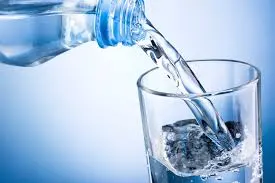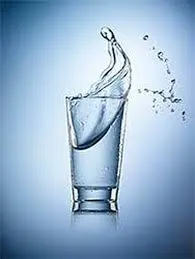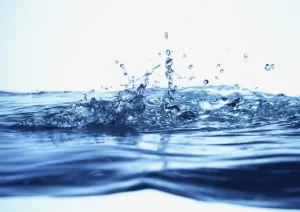Industrial uses
Some industrial processes, notably in the semiconductor and pharmaceutical industries, need large amounts of very pure water. In these situations, feedwater is first processed into purified water and then further processed to produce ultrapure water.
Other Uses
Distilled or deionized water is commonly used to lead-acid batteries used in cars and trucks and for other applications. The presence of foreign ions commonly found in tap water will drastically shorten the lifespan of a lead-acid battery.
Distilled or deionized water is preferable to tap water for use in automotive cooling systems.
Using deionized or distilled water in appliances that evaporate water, such as steam irons and humidifiers, can reduce the build-up of mineral scale, which shortens appliance life. Some appliance manufacturers say that deionised water is no longer necessary.
Purified water is used in freshwater and marine aquariums. Since it does not contain impurities such as copper and chlorine, it helps to keep fish free from diseases and avoids the build-up of algae on aquarium plants due to its lack of phosphate and silicate. Deionized water should be re-mineralized before use in aquaria since it lacks many macros- and micro-nutrients needed by plants and fish.
Water (sometimes mixed with methanol) has been used to extend the performance of aircraft engines. In piston engines, it acts to delay the onset of engine knocking. In turbine engines, it allows more fuel flow for a given turbine temperature limit and increases mass flow. As an example, it was used on early Boeing 707 models. Advanced materials and engineering have since rendered such systems obsolete for new designs; however, spray-cooling of incoming air-charge is still used to a limited extent with off-road turbo-charged engines (road-race track cars).
Deionized water is very often used as an “ingredient” in many cosmetics and pharmaceuticals, where it is sometimes referred to as “aqua” on product ingredient labels; see international nomenclature of cosmetic ingredients.
Because of its high relative dielectric constant (~80), deionized water is also used (for short durations, when the resistive losses are acceptable) as a high voltage dielectric in many pulsed power applications, such as the Sandia national laboratories z machine.
Distilled water can be used in PC water cooling systems and Laser Marking Systems. The lack of impurity in the water means that the system stays clean and prevents a buildup of bacteria and algae. Also, the low conductance reduces the risk of electrical damage in the event of a leak.
When used as a rinse after washing cars, windows, and similar applications, purified water dries without leaving spots caused by dissolved solutes.
Deionized water is used in water-fog fire-extinguishing systems used in sensitive environments, such as where high-voltage electrical and sensitive electronic equipment is used. The ‘sprinkler’ nozzles use much finer spray jets than other systems and operate at up 35 MPa (350 bar; 5,000 psi) of pressure. The extremely fine mist produced takes the heat out of a fire rapidly, and the fine droplets of water are nonconducting (when deionized) and are less likely to damage sensitive equipment. Deionized water, however, is inherently acidic and contaminants (such as copper, dust, stainless and carbon steel, and many other common materials) rapidly supply ions, thus re-ionizing the water. It is not generally considered acceptable to spray water on electrical circuits that are powered, and it is generally considered undesirable to use water in electrical contexts.
Distilled or purified water is used in humidors to prevent cigars from collecting bacteria, mold, and contaminants, as well as to prevent residue from forming on the humidifier material.
Window cleaners using water-fed pole systems also use purified water because it enables the windows to dry by themselves leaving no stains or smears. The use of purified water from water-fed poles also prevents the need for using ladders and therefore ensure compliance with Work at Height Legislation in the UK.
HEALTH EFFECTS OF DRINKING PURIFIED WATER

image waterDistillation removes all minerals from water, and the membrane methods of reverse osmosis and nanofiltration remove most, or virtually all, minerals. This results in demineralized water, which has not been proven to be healthier than drinking water. The World Health Organization investigated the health effects of demineralized water in 1980, and its experiments in humans found that demineralized water increased diuresis and the elimination of electrolytes, with decreased serum potassium concentration. Magnesium, calcium and other nutrients in water can help to protect against nutritional deficiency. Recommendations for magnesium have been put at a minimum of 10 mg/L with 20–30 mg/L optimum; for calcium a 20 mg/L minimum and a 40–80 mg/L optimum, and a total water hardness (adding magnesium and calcium) of 2–4 mmol/L. At water hardness above 5 mmol/L, higher incidences of gallstones, kidney stones, urinary stones, arthrosis, and arthropathies have been observed. For fluoride, the concentration recommended for dental health is 0.5–1.0 mg/L, with a maximum guideline value of 1.5 mg/L to avoid dental fluorosis
Water filtration devices are becoming increasingly common in households. Most of these devices do not distill water, though there continues to be an increase in consumer-oriented water distillers and reverse osmosis machines being sold and used. Municipal water supplies often add or have trace impurities at levels that are regulated to be safe for consumption. Much of these additional impurities, such as volatile organic compounds, fluoride, and an estimated 75,000+ other chemical compounds are not removed through conventional filtration; however, distillation and reverse osmosis eliminate nearly all of these impurities.
The drinking of purified water as a replacement of drinking water has been both advocated and discouraged for health reasons. Purified water lacks minerals and ions such as calcium that play key roles in biological functions, such as in nervous system homeostasis, and are normally found in potable water. The lack of naturally-occurring minerals in distilled water has raised some concerns. The Journal of General Internal Medicine published a study on the mineral contents of different waters available in the US. The study found that “drinking water sources available to North Americans may contain high levels of calcium, magnesium, and sodium and may provide clinically important portions of the recommended dietary intake of these minerals”. It encouraged people to “check the mineral content of their drinking water, whether tap or bottled, and choose water most appropriate for their needs”. Since distilled water is devoid of minerals, supplemental mineral intake through diet is needed to maintain proper health.
The consumption of hard water (water with minerals) is associated with beneficial cardiovascular effects. As noted in the American Journal of Epidemiology, the consumption of hard drinking water is negatively correlated with atherosclerotic heart disease.
Electrical conductivity
The electrical conductivity of ultra-pure water is 5.5 × 10−8 S/cm (18 MΩ·cm in the reciprocal terms of electrical resistivity) and is due only to H+ and OH− ions produced in the water dissociation equilibrium. This low conductivity is only achieved, however, in the presence of dissolved monatomic gases. Completely de-gassed ultrapure water has a conductivity of 1.2 × 10−4 S/m, whereas on equilibration to the atmosphere it is 7.5 × 10−5 S/m due to dissolved CO2 in it. The highest grades of ultrapure water should not be stored in glass or plastic containers because of these container materials leach (release) contaminants at very low concentrations. Storage vessels made of silica are used for less-demanding applications and vessels of ultrapure tin are used for the highest-purity applications. It is worth noting that, although electrical conductivity only indicates the presence of ions, the majority of common contaminants found naturally in water ionize to some degree. This ionization is a good measure of the efficacy of a filtration system, and more expensive systems incorporate conductivity-based alarms to indicate when filters should be refreshed or replaced. For comparison, sea water has a conductivity of perhaps 5 S/m (53 mS/cm is quoted), while normal un-purified tap water may have conductivity of 5 mS/m (50 μS/cm) (to within an order of magnitude), which is still about 2 or 3 orders of magnitude higher than the output from a well-functioning demineralizing or distillation mechanism, so low levels of contamination or declining performance are easily detected.

Industrial uses
Some industrial processes, notably in the semiconductor and pharmaceutical industries, need large amounts of very pure water. In these situations, feedwater is first processed into purified water and then further processed to produce ultra power water.
Other Uses
Distilled or deionized water is commonly used to top up the lead acid batteries used in cars and trucks and for other applications. The presence of foreign ions commonly found in tap water will drastically shorten the lifespan of a lead-acid battery.
Distilled or deionized water is preferable to tap water for use in automotive cooling systems.

water-life-cropUsing deionized or distilled water in appliances that evaporate water, such as steam irons and humidifiers, can reduce the build-up of mineral scale, which shortens appliance life. Some appliance manufacturers say that deionised water is no longer necessary.
Purified water is used in freshwater and marine aquariums. Since it does not contain impurities such as copper and chlorine, it helps to keep fish free from diseases and avoids the build-up of algae on aquarium plants due to its lack of phosphate and silicate. Deionized water should be re-mineralized before use in aquaria since it lacks many macros- and micro-nutrients needed by plants and fish.
Water (sometimes mixed with methonal) has been used to extend the performance of aircraft engines. In piston engines, it acts to delay the onset of engine knocking. In turbine engines, it allows more fuel flow for a given turbine temperature limit and increases mass flow. As an example, it was used on early Boeing 707 models. Advanced materials and engineering have since rendered such systems obsolete for new designs; however, spray-cooling of incoming air-charge is still used to a limited extent with off-road turbo-charged engines (road-race track cars).
Deionized water is very often used as an “ingredient” in many cosmetics and pharmaceuticals, where it is sometimes referred to as “aqua” on product ingredient labels; see international nomenclature of cosmetic ingredients.
Because of its high relative dielectric constant (~80), deionized water is also used (for short durations, when the resistive losses are acceptable) as a high voltage dielectric in many pulsed power applications, such as the Sandia national laboratories z machine.
Distilled water can be used in PC water cooling systems and Laser Marking Systems. The lack of impurity in the water means that the system stays clean and prevents a buildup of bacteria and algae. Also, the low conductance reduces the risk of electrical damage in the event of a leak.

water flowWhen used as a rinse after washing cars, windows, and similar applications, purified water dries without leaving spots caused by dissolved solutes.
Deionized water is used in water-fog fire-extinguishing systems used in sensitive environments, such as where high-voltage electrical and sensitive electronic equipment is used. The ‘sprinkler’ nozzles use much finer spray jets than other systems and operate at up 35 MPa (350 bar; 5,000 psi) of pressure. The extremely fine mist produced takes the heat out of a fire rapidly, and the fine droplets of water are non-conducting (when deionized) and are less likely to damage sensitive equipment. Deionized water, however, is inherently acidic and contaminants (such as copper, dust, stainless and carbon steel, and many other common materials) rapidly supply ions, thus re-ionizing the water. It is not generally considered acceptable to spray water on electrical circuits that are powered, and it is generally considered undesirable to use water in electrical contexts.
Distilled or purified water is used in humidors to prevent cigars from collecting bacteria, mold, and contaminants, as well as to prevent residue from forming on the humidifier material.
Window cleaners using water-fed pole systems also use purified water because it enables the windows to dry by themselves leaving no stains or smears. The use of purified water from water-fed poles also prevents the need for using ladders and therefore ensure compliance with Work at Height Legislation in the UK.
HEALTH EFFECTS OF DRINKING PURIFIED WATER
Distillation removes all minerals from water, and the membrane methods of reverse osmosis and nanofiltration remove most, or virtually all, minerals. This results in demineralized water, which has not been proven to be healthier than drinking water. The World Health Organization investigated the health effects of demineralized water in 1980, and its experiments in humans found that demineralized water increased diuresis and the elimination of electrolytes, with decreased serum potassium concentration. Magnesium, calcium and other nutrients in water can help to protect against nutritional deficiency. Recommendations for magnesium have been put at a minimum of 10 mg/L with 20–30 mg/L optimum; for calcium a 20 mg/L minimum and a 40–80 mg/L optimum, and a total water hardness (adding magnesium and calcium) of 2–4 mmol/L. At water hardness above 5 mmol/L, higher incidences of gallstones, kidney stones, urinary stones, arthrosis, and arthropathies have been observed. For fluoride, the concentration recommended for dental health is 0.5–1.0 mg/L, with a maximum guideline value of 1.5 mg/L to avoid dental fluorosis
Water filtration devices are becoming increasingly common in households. Most of these devices do not distill water, though there continues to be an increase in consumer-oriented water distillers and reverse osmosis machines being sold and used. Municipal water supplies often add or have trace impurities at levels that are regulated to be safe for consumption. Much of these additional impurities, such as volatile organic compounds, fluoride, and an estimated 75,000+ other chemical compounds are not removed through conventional filtration; however, distillation and reverse osmosis eliminate nearly all of these impurities.
The drinking of purified water as a replacement of drinking water has been both advocated and discouraged for health reasons. Purified water lacks minerals and ions such as calcium that play key roles in biological functions, such as in nervous system homeostasis, and are normally found in potable water. The lack of naturally-occurring minerals in distilled water has raised some concerns. The Journal of General Internal Medicine published a study on the mineral contents of different waters available in the US. The study found that “drinking water sources available to North Americans may contain high levels of calcium, magnesium, and sodium and may provide clinically important portions of the recommended dietary intake of these minerals”. It encouraged people to “check the mineral content of their drinking water, whether tap or bottled, and choose water most appropriate for their needs”. Since distilled water is devoid of minerals, supplemental mineral intake through diet is needed to maintain proper health.
The consumption of hard water (water with minerals) is associated with beneficial cardiovascular effects. As noted in the American Journal of Epidemiology, the consumption of hard drinking water is negatively correlated with atherosclerotic heart disease.


